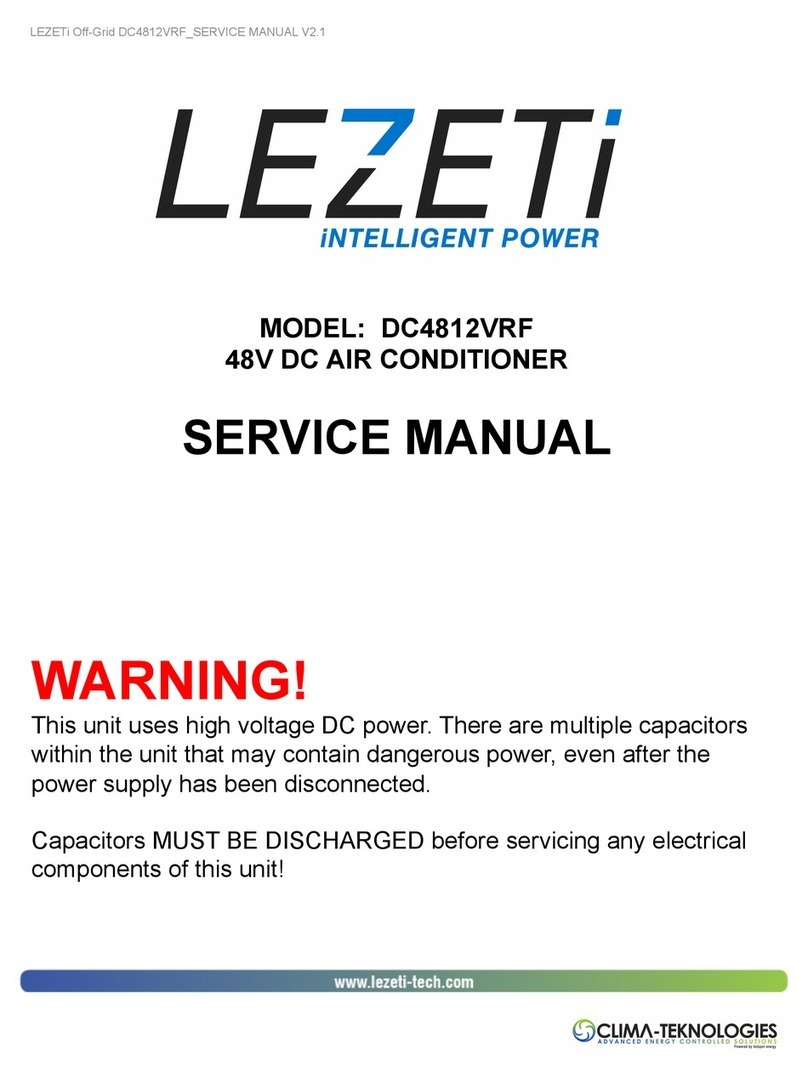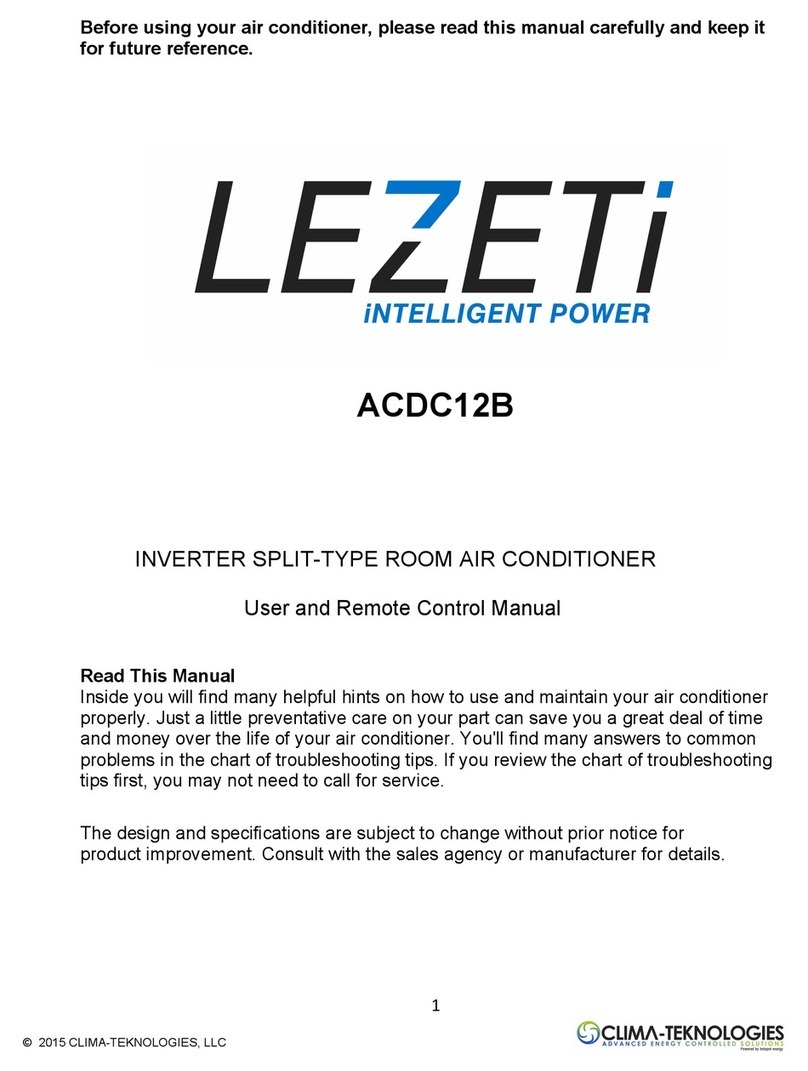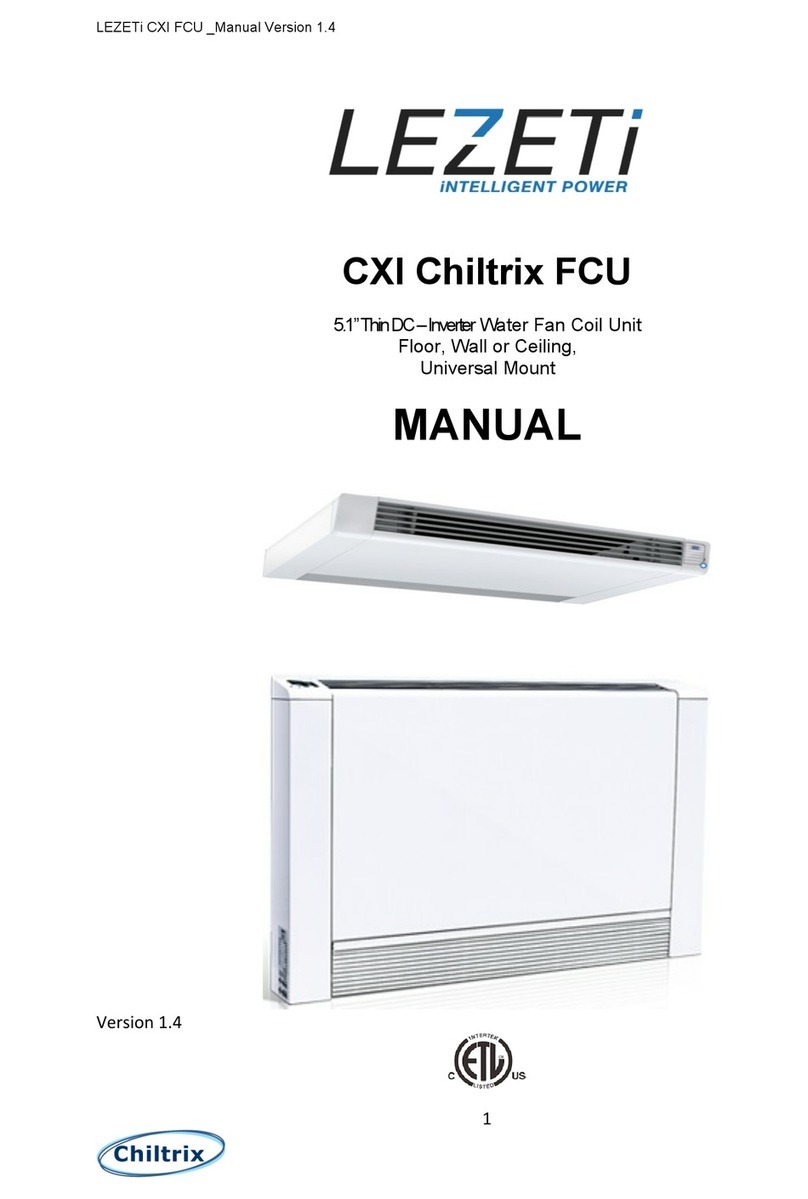
8
INSTALLATION INSTRUCTIONS
Connective Pipe and Drainage Installation
6. Run the drain hose sloping downward. Do not
install the drain hose as illustrated in Fig.7.
When connecting extension drain hose, insulate
the connecting part of extension drain hose with a
shield pipe, do not let the drain hose slack.
7. For the right-hand piping, remove the pipe cover
from the side panel. (Optional)
Install the piping as
shown.
NOTE: For 9K/12K model, there is only
one
side drainage structure design.
If choosing right side
drainage
connection,
another proper drain hose
is
needed as there
is only one drain hose
offered
by factory. The
connection
of
the drain hose is supposed to
be done
by
qualified installer in case of water
leakage.
8. Bundle the tubing, connecting cable, and drain
hose with tape securely, evenly as shown in Figure
on the right.
9. The condensed water from the rear of the outdoor
unit is gathered in a ponding box and is piped out
of the room. Do not put anything else in the box.
10. Pass the piping through the hole in the
wall.
11. Put the upper claw at the back of the indoor unit
on the upper hook of the installation plate, move
the indoor unit side to side to see that it is
securely hooked (see Fig. 9 & 10).
12. Piping can be made easy by lifting the indoor unit
and placing a spacer between the indoor unit and
the wall.
13. Push the lower part of the indoor unit
up
on the
wall, then move the indoor
unit
from side to
side, up and down to
check
if it is hooked
securely.
14. Bundle the tubing, connecting cable and drain
hose securely and evenly with tape as shown in
Fig. 12.
CAUTION
Connect the indoor unit first, then the outdoor
unit.
Do not allow the piping to let out from the back
of the indoor unit.
Be careful not to let the drain hose slack.
Be sure that the drain hose is located at the
lowest side of the bundle. Locating at the upper
side can cause drain pan to overflow inside the
unit.
Never intercross or intertwist the power wire
with any other wiring.
© 2015 CLIMA-TEKNOLOGIES, LLC
































